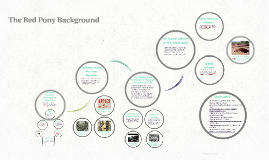Red Presentation
Transcript: Liposuction Common Procedures Liposuction is a surgical procedure that removes fat deposits from specific areas of the body, enhancing body contour. It is often used in conjunction with other procedures and can be performed on various body regions, providing effective results for candidates. Aesthetic medicine encompasses a variety of procedures designed to enhance physical appearance and address various skin concerns. Understanding these common treatments can aid in making informed choices for personal enhancement needs. Definition and Overview Introduction to Aesthetic Medicine Facelifts Microneedling Aesthetic medicine is a branch of medicine focused on improving cosmetic appearance through non-surgical and surgical techniques. It includes procedures like fillers, Botox, and laser therapies, enhancing physical features while prioritizing patient well-being. Botulinum Toxin Injections Aesthetic medicine encompasses a range of procedures aimed at enhancing appearance and boosting confidence. It has become an integral part of healthcare, merging art with medical science to meet patient needs. Facelifts, or rhytidectomy, surgically tighten and lift sagging skin to create a more youthful facial appearance. This procedure targets deep creases and jowls, resulting in a smoother and firmer facial contour, often with lasting results. Microneedling employs tiny needles to create micro-injuries in the skin, promoting natural collagen production. This minimally invasive treatment improves skin texture, reduces scars, and enhances absorption of skin care products, leading to rejuvenated skin. Botulinum toxin, commonly known as Botox, temporarily paralyzes facial muscles to reduce the appearance of wrinkles. It is widely used for cosmetic purposes, particularly for forehead lines, crow's feet, and frown lines, providing a smoother, youthful look for several months. Trends and Developments Importance in Modern Healthcare Dermal Fillers Laser Treatments The field of aesthetic medicine is rapidly evolving, with emerging trends such as minimally invasive procedures and personalized treatment plans. Advancements in technology, including the use of AI and innovative dermal products, enhance patient results. In today's society, aesthetic medicine plays a crucial role in addressing not just physical attributes but also mental health by improving self-esteem. Patients often seek these treatments to regain confidence and promote overall well-being. Dermal fillers are substances injected into the skin to restore volume and smooth out wrinkles. Commonly used areas include lips, cheeks, and around the mouth, fillers can create a more youthful appearance and enhance facial contours. Laser treatments utilize focused light to target specific skin concerns such as scars, pigmentation, and wrinkles. They stimulate collagen production and can significantly improve skin texture, with various types tailored to distinct skin issues. Chemical Peels Chemical peels involve applying a solution to the skin to exfoliate and improve its texture and tone. They can address issues such as sun damage, fine lines, and pigmentation, helping to reveal smoother and more radiant skin. Future of Aesthetic Medicine Recovery and Aftercare As technology advances, the future of aesthetic medicine looks promising, with innovations such as AI and personalized treatments. Continued research and development are expected to expand treatment options and enhance safety and effectiveness. Recovery times vary by procedure, but proper aftercare is crucial for successful outcomes. Adhering to post-treatment guidelines, attending follow-up appointments, and communicating concerns with practitioners enhances healing and reduces complications. Choosing Qualified Practitioners Safety Regulations Selecting a qualified practitioner is paramount in aesthetic medicine. Patients should seek certified professionals with relevant experience to minimize risks and ensure optimal treatment results, as not all practitioners possess the same level of expertise. In many countries, aesthetic medicine is governed by strict regulations to ensure patient safety. Compliance with safety standards and ethical practices is essential for medical professionals conducting aesthetic procedures to minimize risks and enhance outcomes. Potential Side Effects Benefits and Risks of Aesthetic Medicine Despite the popularity of aesthetic procedures, they come with potential risks such as swelling, bruising, or allergic reactions. Understanding these side effects is crucial for individuals considering treatments to make informed decisions about their health. Aesthetic medicine presents numerous benefits, from enhancing physical appearance to positively influencing psychological well-being. However, it also comes with inherent risks and requires careful consideration of safety standards and practitioner qualifications. Red Presentation Enhancing Appearance Psychological Impact Aesthetic procedures play a

















